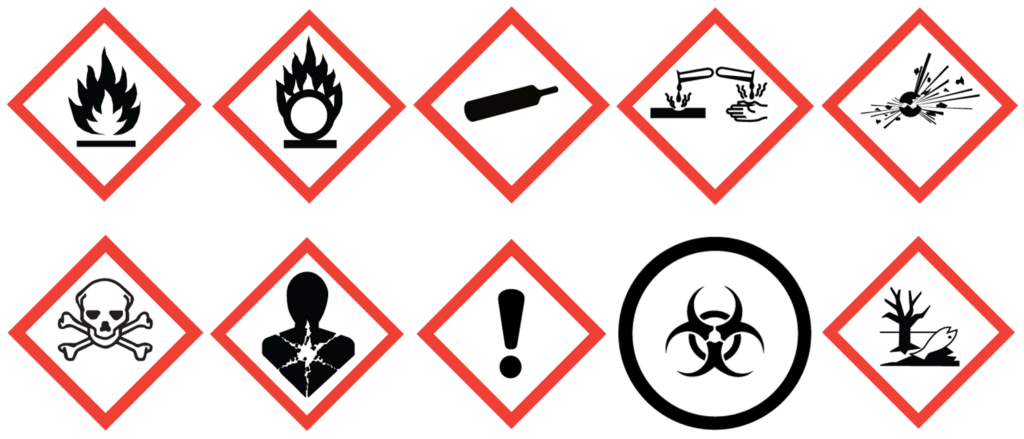The Workplace Hazardous Materials Information System (WHMIS) is a program that helps Canadian workplaces provide health and safety information about potentially hazardous materials that workers (or students!) may use or be exposed to. You can read more about WHMIS from the Government of Canada here.
Hazard Categories
In WHMIS, materials are given a hazard category (such as 1A, 1B, 2A, etc). Smaller numbers and early-alphabet (Such as 1A) mark the most hazardous materials. Larger numbers (such as 2C or 3) indicate a lesser hazard.
Safety Data Sheets (SDS)
A Safety Data Sheet (SDS) must be provided for any potentially hazardous material. These contain information on:
- Properties and potential hazards of a substance
- Safe use and handling of a substance
- What to do if there is an emergency (i.e. first aid for exposure)
It is a good idea to review the SDS for any unfamiliar chemicals before you work with them (at home or in the laboratory!). University of Calgary students can access SDS through Chematix.
Pictograms
WHMIS uses pictograms (shown below) to quickly indicate different types of hazard. Note that the pictogram shows the type of hazard, but not the hazard category (indicating severity). The category may be on the label, or on the SDS for that chemical.

For a detailed description of each pictogram’s meaning and hazard categories within each pictogram see here.
Briefly, the pictograms are (left-to-right, from top):
- FLAME – Flammable material
- FLAME OVER CIRCLE – Oxidizer
- GAS CYLINDER – Gas under high pressure
- CORROSION – Corrosive material (damages metals and skin)
- EXPLODING BOMB – Highly reactive or explosive material
- SKULL AND CROSSBONES – Toxic material
- HEALTH HAZARD – Other serious health effects (includes carcinogens)
- EXCLAMATION MARK – Less-severe health hazards (e.g. irritation)
- BIOHAZARD – Disease hazard
- ENVIRONMENTAL HAZARD – Causes damage to the environment (disposal hazard)